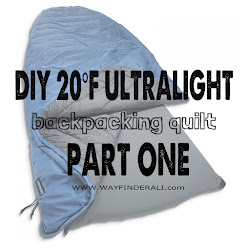I admit that addicted might not be the best word, but it’s unfortunately the closest in the English language to describe what comfort is doing to us. I suspect German may have a better word. When we are addicted to something, we need more and more of it to feel the same effects. We’ve made our modern lives as comfortable as technology allows, and we’ve cocooned ourselves. The deeper into the cocoon we go, the more sensitive we become to smaller and smaller levels of discomfort.
Our bodies are actually incredibly good at adapting, but we insist on keeping the thermostat at 70° year round. We curse the heat in the summer and then again curse the cold in the winter- making ourselves miserable year-round unless we are indoors. We’ve long exchanged sustainably warm wool for snuggly, plush polyester and nylon.
Let me explain with an example from my past. I used to lead sea kayaking expeditions during the summer on the coast of North Carolina. I spent six to seven hours a day sitting in my narrow kayak paddling in 100 degree heat. We camped each night on a beach. Everything was covered in salt and sand, and there were always mosquitoes stalking our every move. My memories from my first trip were of how gritty everything felt all the time, how itchy and prickly my skin was, how the heat was suffocating and the headwind exhausting. It was radically uncomfortable, but also beautiful and epic. By the end of the summer, I didn’t even notice the grit and I was accustomed to the heat. I have a distinct memory of walking into my house barefoot and marveling at how soft the carpet was. To me, the pristine white sand was soft- but the carpet in my dilapidated college rental was impossibly, remarkably soft. I was so accustomed to the heat, I had to take a fleece jacket out to dinner to tolerate the air conditioning in the restaurant.
It is currently winter, and I’m not leading outdoor trips at the moment. As I walk into the grocery store in fleece pants and a fleece jacket on a windy 36 degree day, I feel piercing cold when the wind blows. I haven’t spent enough time outside over the last two months for my body to acclimate to the change in temperature. I’m hyper-sensitive to the discomfort, and my brain resists hard (aka screams) when I try to force it to adapt by wearing less clothing on cool days, taking warm-not-hot showers, and turning down the thermostat. It’s SO EASY for me to avoid discomfort and therefore requires an enormous amount of discipline to not make myself more comfortable by flipping a switch or staying inside.
I would argue that we’re all generally worse off for this extreme level of comfort. Climate controlled homes are great at keeping us from dying of hypothermia, and are critical for public health and safety. Our comforts are life savers for those of us with chronic illness and with disabilities. I am thankful for running water, electric heat and a gas stove when I'm sick or overwhelmed from work. But for many of us, we’re making ourselves more miserable year round by avoiding the discomfort of acclimatizing. So bump your thermostat closer to outside temps, get outside when the weather isn’t perfect, and marvel at your body’s ability to adapt.

















